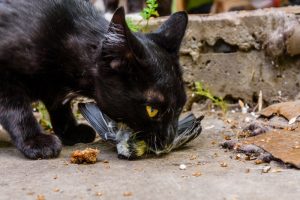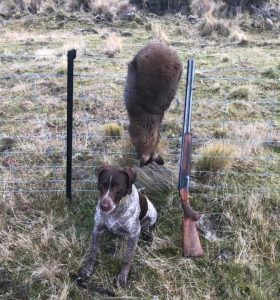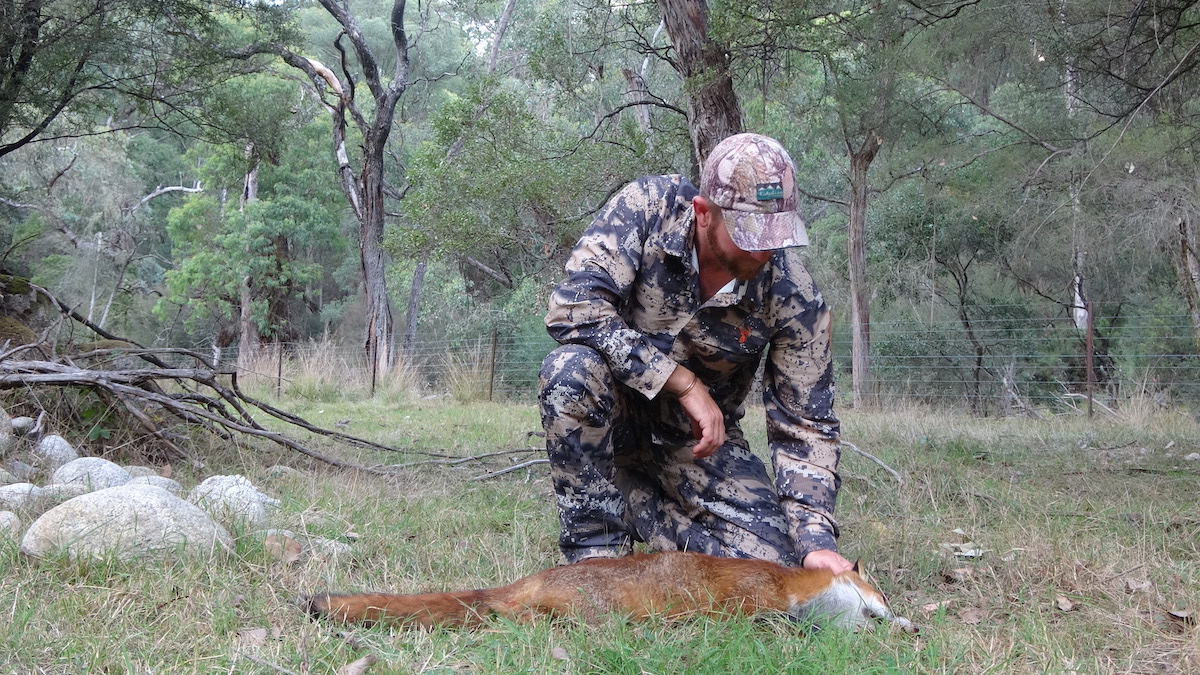The Tasmanian government announced important changes to its Cat Management Act today but do the new laws have enough claws to protect Tasmania’s most vulnerable wildlife?
Before we look at the changes to the Cat Management Act, let’s first take a quick look at why the changes are necessary.
Are cats the biggest existential threat to Australian wildlife?
According to conservation experts, 21 species have become extinct in Australia. But did you know that the humble feline has been directly complicit in 19 species extinctions?
It is a grisly crown the cat shares with another introduced species, the European fox, making the cat and the fox the most deadly threat our native wildlife faces.
Have you ever watched your cat kill a mouse or a bird that it had no intention of eating? That’s because the cat (and the fox) are surplus killers. That means they kill for fun just as much for food. Even a well-fed domestic cat, if left uncontained, will hunt small birds, mammals and reptiles it finds in its neighbourhood.
Wildlife experts believe that feral cats are capable of killing between 5 and 30 animals per day in the wild, making them one of the most ferocious serial killers in nature.
Some people believe these figures are way too high, but even if a cat only killed one animal per day for food, the numbers are still horrendously high.
Now add domestic moggies to this. They are just as capable of killing. While it may not be in the realms of their wild cousins, even if they only killed one animal per day, they are still capable of killing hundreds of animals per year.
So how many animals are killed by cats every year?
It’s hard to tell exactly. That’s because there are no definitive numbers for how many cats there are.
However, a recent study by the University of Melbourne estimates that around 48% of Australians own pets and of that number, 37% own at least one cat. That puts a conservative estimate on the number of domestic cats at around 4.5 million.
Add this to the Australian government estimate of feral cats, which puts their number somewhere between 4 and 6 million.
That’s potentially somewhere between 8.5 million and 10.5 million cats in Australia – each with the potential to kill one animal each per day!
When you extrapolate those figures across an entire year (if you’re not good at maths, it’s well over 3 billion) you can quickly see why cats are one of the biggest existential threats facing Australian wildlife! And why governments need to get serious with their cat management laws.
How big is the problem in Tasmania?
Again, there are no studies or accurate figures for the number of domestic, stray and/or feral cats in Tasmania, but if we were to use similar figures as the Australian estimates, there are at least 100,000 domestic cats and feral cats in the State.
Here’s our calculations:
Tasmanian population is 540,600. 48% of that is 259,488 and assuming the same rate of cat ownership exists here, there are potentially 96,000 domestic cats in Tasmania.
Tasmania makes up 0.9% of the landmass of Australia, so if the whole country has between 4 and 6 million cats, Tasmania has at least 3600 feral cats, if not 5400.
If we were to go by the lowest estimates that each cat in Tasmania is capable of killing 1 animal per day and extrapolate that figure across an entire year, the conservative estimates of wildlife being threatened by cats in Tasmania each year is around 36 million.
With figures like that, you have to wonder why the Greens, the Animal Justice Party and the RSPCA are so hyper-focused on recreational hunters while turning a blind eye to the horrors caused by the humble pussy cat!
What changes has Tasmania announced?
Today, Minister Guy Barnett announced that his government would add several new laws to the Tasmanian Cat Management Act, which looks to manage the damage caused by domestic, stray and feral cats.
From Monday 1 March 2021:
What is missing and what more could be done?
There are a few noticeable absences from the new cat management laws.
The most obvious omission is any requirement for cat owners to contain their cats within the boundaries of their own properties. Why did the government go soft on that recommendation? If every domestic cat was required to be contained, the State government could save in excess of 35 million animals each year!
While desexing requirements might limit the number of future cats, it does nothing to diminish an existing cat’s appetite. A desexed cat is still a serial killer capable of killing hundreds of vulnerable animals each year.
We also noticed there’s no real mention of penalties. What is the penalty for anyone who doesn’t abide by these rules? What about penalties for backyard breeders or private (unregistered) citizens selling undesexed kittens? And how will these be policed?
The changes stipulate what primary producers can do to euthanise a cat on their property, but it fails to recognise the damage that feral cats can cause outside of farming land – like in wilderness areas, public lands and state forests where our native animals are most vulnerable.
Why hasn’t the State government considered the vital role recreational hunters are playing interstate in keeping feral cats, foxes and wild dog numbers down? Perhaps they should take a leaf out of Victoria’s book (not often you’ll hear us say that) and look at introducing a bounty on feral cats. A $10 bounty per feral cat would provide a great incentive for recreational hunters to help reduce the numbers, and a pretty potent reminder for domestic cat owners to keep their cats contained!
And lastly, if the State government really cared about the existential threat of mass species extinction, they’d stop pussy-footing around the bow hunting issue and let people bow hunt feral cats.
For more information on changes to the Cat Management Act 2009 and the Tasmanian Cat Management Plan go to https://dpipwe.tas.gov.au/invasive-species/cat-management-in-tasmania/ or visit the TassieCat website: www.tassiecat.com
What is I Am Hunter?
I Am Hunter wants to change the way hunting is perceived and to change the conversation from a negative one driven by anti-hunters to a positive one led by hunters.
Our goal is to help hunters become positive role models and ambassadors for hunting, while simultaneously helping non-hunters understand why hunting is important.
You can become a supporter and help us achieve our goal and spread a positive message about hunting with the wider community.
Our other channels
Follow us on Facebook
Follow us on Instagram
YouTube
Subscribe to our YouTube channel.
Get our newsletter
Get our free monthly newsletter direct to your inbox
Listen on iTunes
Listen to our podcast on iTunes.
TV series
Watch I Am Hunter episodes on My Outdoor TV (MOTV)






